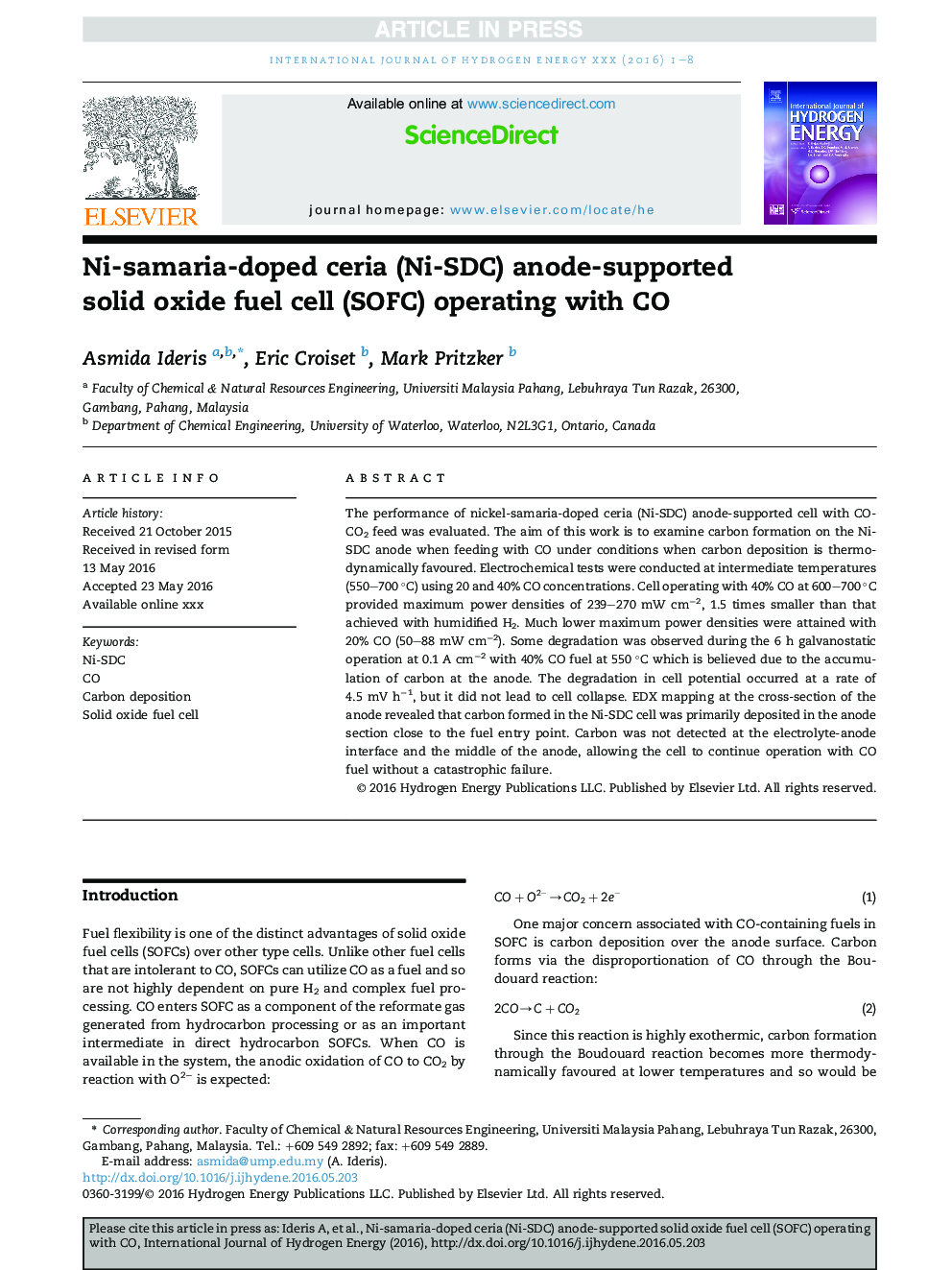| Article ID | Journal | Published Year | Pages | File Type |
|---|---|---|---|---|
| 5147842 | International Journal of Hydrogen Energy | 2017 | 8 Pages |
Abstract
The performance of nickel-samaria-doped ceria (Ni-SDC) anode-supported cell with CO-CO2 feed was evaluated. The aim of this work is to examine carbon formation on the Ni-SDC anode when feeding with CO under conditions when carbon deposition is thermodynamically favoured. Electrochemical tests were conducted at intermediate temperatures (550-700 °C) using 20 and 40% CO concentrations. Cell operating with 40% CO at 600-700 °C provided maximum power densities of 239-270 mW cmâ2, 1.5 times smaller than that achieved with humidified H2. Much lower maximum power densities were attained with 20% CO (50-88 mW cmâ2). Some degradation was observed during the 6 h galvanostatic operation at 0.1 A cmâ2 with 40% CO fuel at 550 °C which is believed due to the accumulation of carbon at the anode. The degradation in cell potential occurred at a rate of 4.5 mV hâ1, but it did not lead to cell collapse. EDX mapping at the cross-section of the anode revealed that carbon formed in the Ni-SDC cell was primarily deposited in the anode section close to the fuel entry point. Carbon was not detected at the electrolyte-anode interface and the middle of the anode, allowing the cell to continue operation with CO fuel without a catastrophic failure.
Related Topics
Physical Sciences and Engineering
Chemistry
Electrochemistry
Authors
Asmida Ideris, Eric Croiset, Mark Pritzker,
